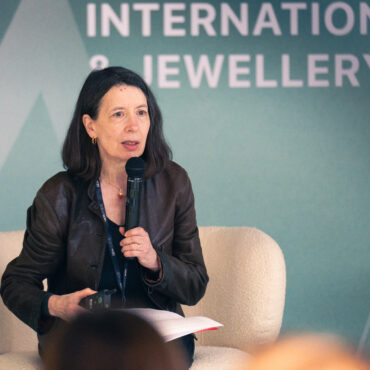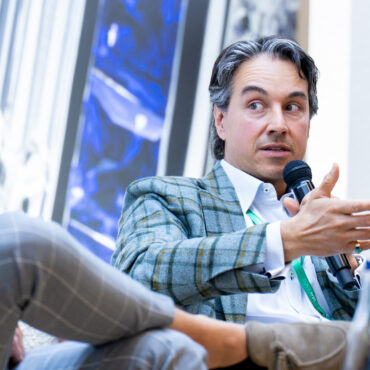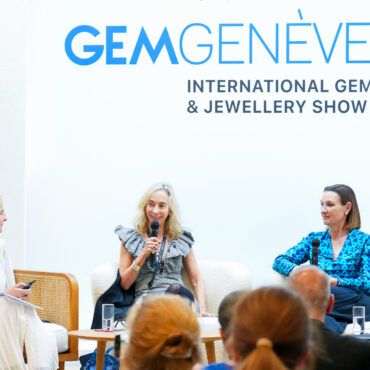Whether diamonds should be classified as an industrial product like any other brings forth multiple perspectives that span the realms of science, business, and culture. In a recent round table held at GemGenève, leading experts in gemmology, geology, and the diamond trade gathered to explore this very topic. Moderated by Boris Chauviré, Chloé Picard, and Marie Chabrol, the session featured contributions from Astrid Pothion, Dr. Michaël Mintrone, and Raj Mehta. Their insights, shaped by years of experience, provide a comprehensive view of the diamond’s role in modern society — both as a unique luxury product and as an industrial resource.
The Beginnings of Passion: Diamonds and Careers
For each panellist, diamonds have not only shaped their careers but have become integral to their personal identities. Astrid Pothion, a seasoned gemologist, recounts how her love affair with diamonds began in Paris, where she took her first steps in the diamond trade. As a freshly graduated gemologist, she was drawn to the technical aspects of diamond quality and quickly immersed herself in the rich world of diamond grading and the finer details of the craft. Her journey took her to Antwerp, the global diamond capital, and later to Switzerland and France, where she worked on quality management systems for renowned players in the diamond, watch, and jewellery industries. For Pothion, diamonds are not just materials to be studied and graded, but they are symbols of precision and passion, a perfect blend of natural beauty and human craftsmanship.
Dr. Michaël Mintrone, whose background in geology gives him a unique perspective, emphasised the scientific allure of diamonds. He described them as a mineral form with the extraordinary ability to unlock secrets about Earth’s history. Diamonds, he explained, are much more than jewels; they are ancient, rare geological wonders that tell the story of our planet’s formation. Since joining the SSEF (Swiss Gemmological Institute) in Basel, Mintrone has focused on furthering the understanding of diamonds through research and teaching, often marvelling at how these gemstones, sometimes billions of years old, can shed light on processes that shaped life on Earth. His work at SSEF aligns with his belief that diamonds are a powerful educational tool capable of sparking curiosity about the planet’s past.
Raj Mehta, whose life has been inextricably linked to the diamond trade through his family’s business, brought a different perspective. He described how diamonds have been a part of his life since childhood, from listening to his father’s business conversations at the dinner table to joining the family business at 19. For Mehta, diamonds represent more than just business or luxury; they are a celebration of human connections and cultures. His experiences, particularly interacting with people across different cultures and geographic locations, have fueled his deep passion for diamonds, which he views not just as products but as a bridge between diverse communities.
Diamonds in Life and Work: More Than Just a Product
As the discussion shifted towards the significance of diamonds in their professional and personal lives, the panellists unanimously agreed that diamonds are far more than mere objects; they are symbols imbued with emotional, geological, and cultural weight.
For Pothion, diamonds are fundamentally connected to both technical precision and artistic expression. She explained that diamonds’ rarity, their four Cs (carat, cut, colour, and clarity), and the meticulous craftsmanship involved in turning rough stones into polished gems make the industry uniquely fascinating. She also pointed out the people who work with diamonds — miners, manufacturers, and jewellers — whose expertise and passion drive the industry forward. For her, diamonds encapsulate the artistry of cutting, the rarity of the material, and the knowledge that binds the global network of diamond professionals.
Mintrone, echoing similar sentiments, highlighted how diamonds are a never-ending source of learning. He mentioned how, even outside of his professional hours, he often finds himself reflecting on the complex nature of diamonds — their spectra, their chemistry, and their journey from deep within the Earth to the surface. His fascination with diamonds is rooted not just in their aesthetic beauty but in their ability to tell stories about the natural world and human history. For Mintrone, diamonds are a constant source of intellectual stimulation, with their scientific complexities always offering new avenues for exploration.
Mehta shared a more personal viewpoint, emphasising the joy that comes from working with diamonds. For him, the process of sourcing raw diamonds, examining their characteristics, and transforming them into finished products is a deeply creative and fulfilling endeavour. He described his passion for large stones, appreciating their rarity and the intricate process involved in turning rough diamonds into polished works of art. However, he also acknowledged that diamonds, in all their forms, from melee diamonds to fancy shapes, are fascinating for their own unique qualities. The diamond trade, he said, is as much about people and relationships as it is about the product itself.
Marketing Diamonds: A Legacy of Prestige and a Path Toward Innovation
Marketing plays a significant role in shaping how diamonds are perceived in society. The iconic “A Diamond is Forever” campaign, pioneered by De Beers, has long cemented diamonds as symbols of eternal love and status. In this round table, however, the panellists noted that the marketing narrative must evolve to address modern concerns, such as sustainability, traceability, and ethical sourcing.
Mintrone suggested that the next frontier in diamond marketing lies in emphasizing not just the beauty of the stones but also their geological rarity and the extraordinary processes that bring them to the Earth’s surface. By showcasing the history behind diamonds — their age, their origins, and the geological processes that shaped them — the industry can add a layer of depth to its narrative. These stories, he argued, could make diamonds even more meaningful to consumers, transforming them from mere luxury items to symbols of Earth’s ancient history.
Pothion and Mehta both expressed enthusiasm for the industry’s efforts to integrate corporate social responsibility (CSR) goals into marketing strategies. The diamond industry, they pointed out, is increasingly focused on traceability and sustainability. While De Beers’ recent campaign on CSR and traceability is noteworthy, there is still room for further innovation in how the industry communicates its ethical practices to the public. Mehta emphasised the human element in marketing diamonds, describing how the industry supports entire communities, from miners to retailers, and contributes to the social and economic development of countries such as Botswana and Sierra Leone.
Traceability and Sustainability: Challenges and Solutions
Traceability remains one of the most pressing concerns for the diamond industry today. As consumers become more conscious of the ethical implications of their purchases, the demand for transparency has intensified. The panellists discussed the challenges of tracing diamonds’ origins, particularly melee diamonds, which often come from multiple sources and are difficult to keep separate in the supply chain.
Pothion, however, was optimistic about the progress being made. She highlighted the role of new technologies, such as blockchain, in enhancing traceability and ensuring that diamonds are sourced ethically. These technologies are particularly promising in terms of providing a clear record of a diamond’s journey from mine to market, offering consumers a greater sense of trust and confidence in their purchases.
Mehta concurred, noting that while complete traceability for every diamond is not currently possible, the industry has made significant strides. He explained that single diamonds can be traced back to their rough origins, but the challenges increase when dealing with smaller stones or melee diamonds, where administrative and commercial constraints make it impractical to maintain strict separation. Despite these limitations, Mehta believes the industry is moving in the right direction, and that traceability will continue to improve over time.
The Diamond Industry’s Dual Nature: Industrial and Creative
The panellists also addressed the question of whether diamonds should be considered industrial products. While the debate continues, Pothion, Mintrone, and Mehta all agreed that diamonds serve dual roles. On the one hand, industrial diamonds are used for cutting, grinding, and other manufacturing processes, often with synthetic diamonds playing a crucial role in technological advancements. Pothion, for example, mentioned how synthetic diamonds have become invaluable in fields like medicine, particularly in the development of medical implants.
However, when it comes to gem-quality diamonds, the conversation shifts. For Mintrone, diamonds are never just industrial products; they are natural marvels and geological treasures that are shaped by processes far beyond human control. Similarly, Pothion and Mehta focused on the creative side of the diamond industry, where the emphasis is on beauty, rarity, and craftsmanship. The artistry involved in selecting, cutting, and polishing diamonds makes them distinct from other industrial products, and this is where their true value lies.
Looking Ahead: The Future of the Diamond Industry
As the panel discussion drew to a close, the participants reflected on the future of the diamond industry. They emphasised that the future lies in sustainability, traceability, and continued innovation. Mehta stressed the need for the industry to focus on ethical practices, ensuring that diamonds continue to support communities and contribute positively to the global economy. Pothion highlighted the importance of education and research, particularly in terms of improving understanding of diamonds’ geological origins and their journey through the supply chain.
In the end, the diamond industry faces numerous challenges, from traceability to ethical sourcing, but its future remains bright. Diamonds will continue to captivate consumers not just with their inherent beauty but with the stories they tell — stories of ancient Earth processes, human craftsmanship, and the communities that sustain this remarkable industry.
Moderators:
Boris Chauviré (Gemmologist, Researcher and Teacher in geology, mineralogy and gemmology)
Chloé Picard (Gemmologist)
Marie Chabrol (Gemmologist, Journalist)
With:
Astrid Pothion (Gemmologist)
Dr. Michaël Mintrone (Head of Diamond Department, SSEF)
Raj Mehta (Director of Rosy Blue NV)





